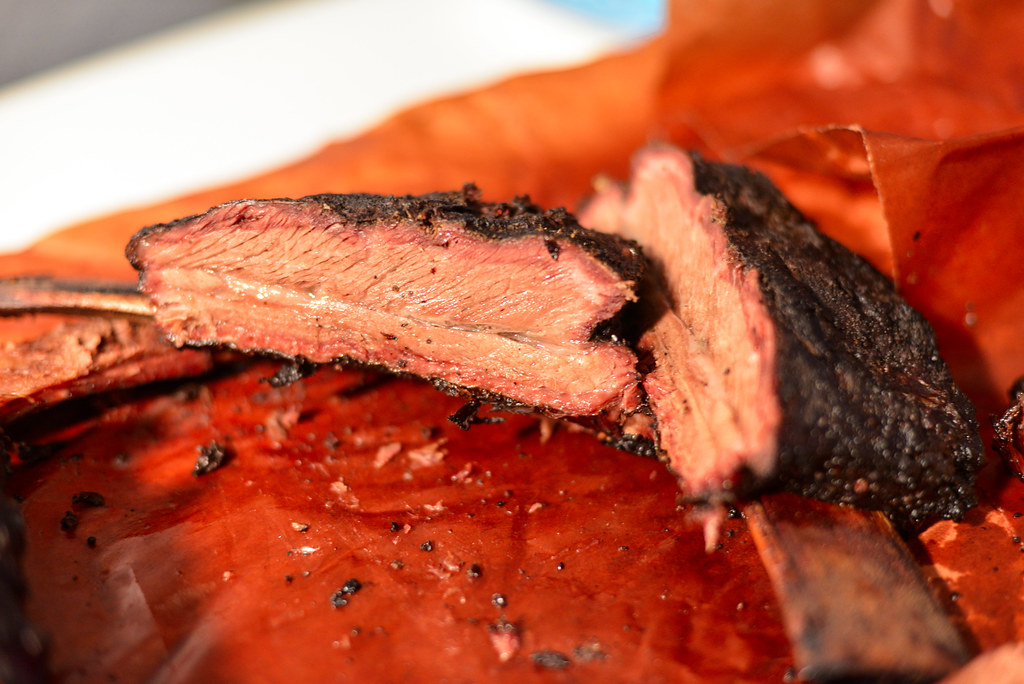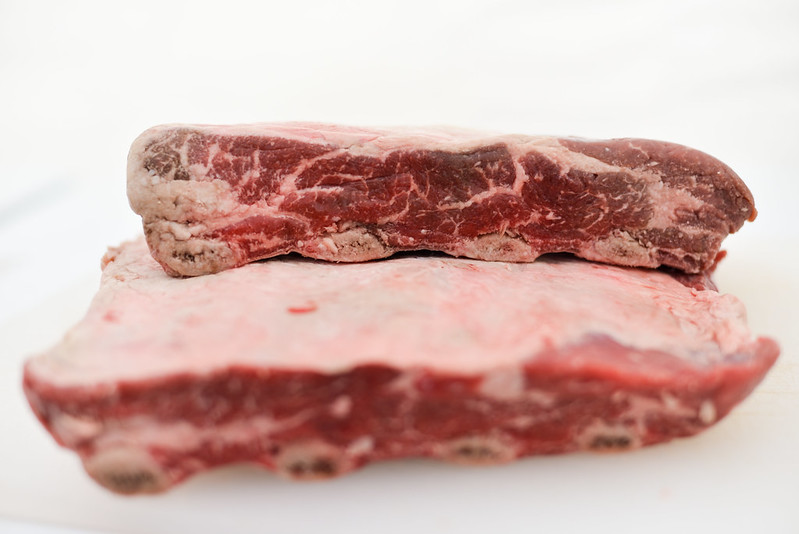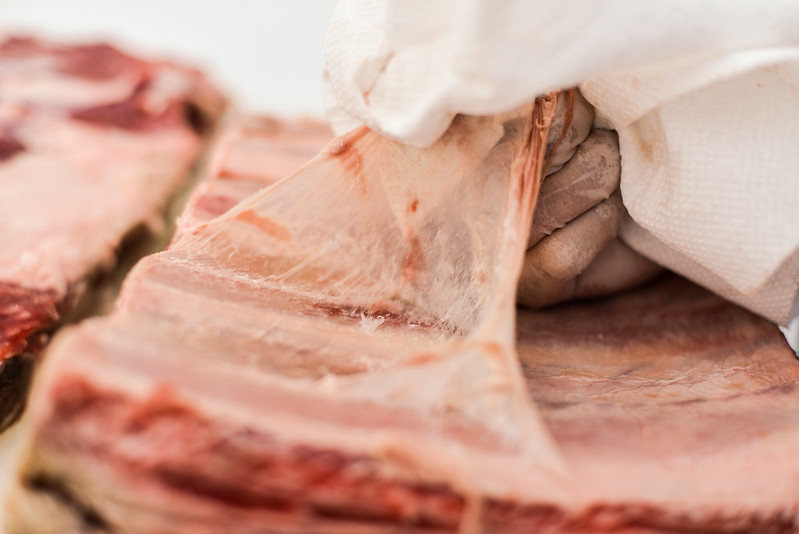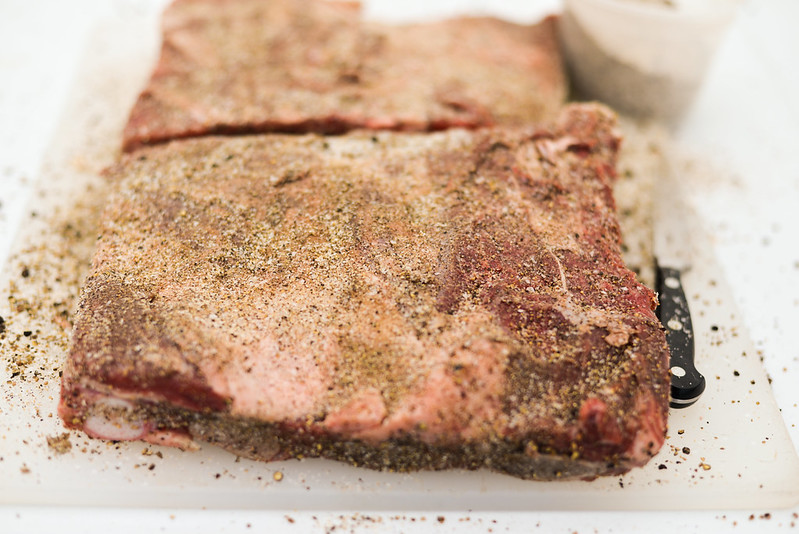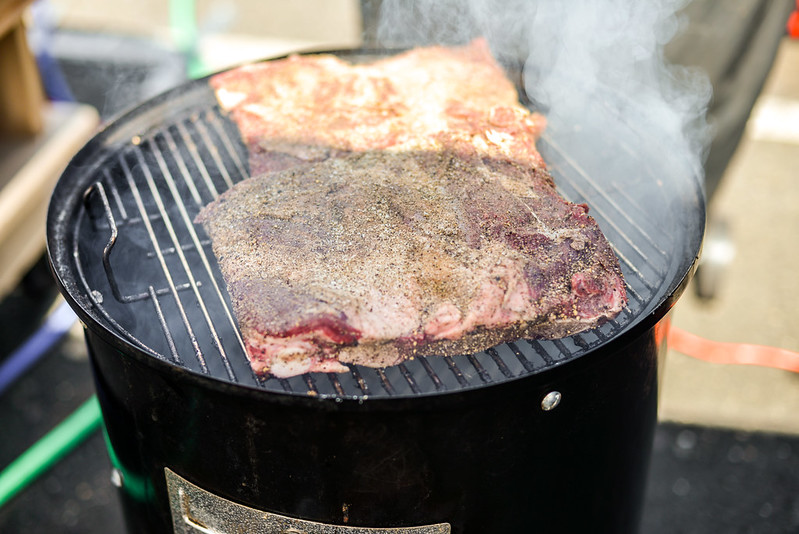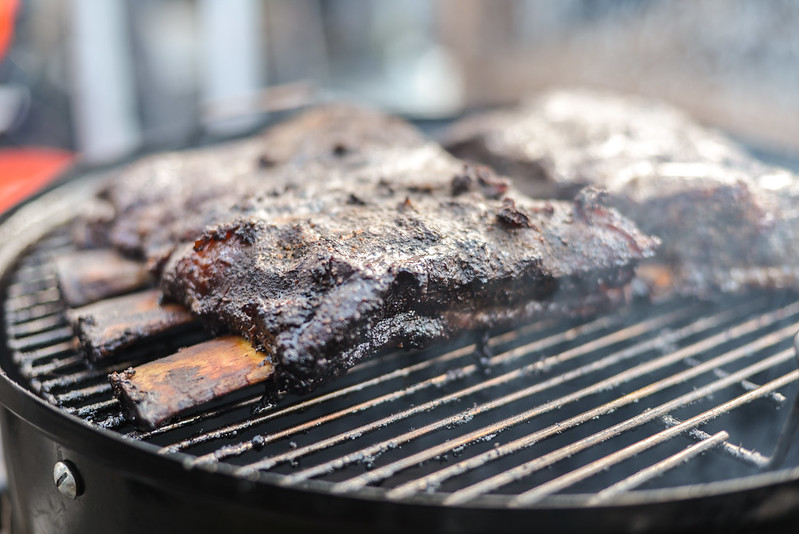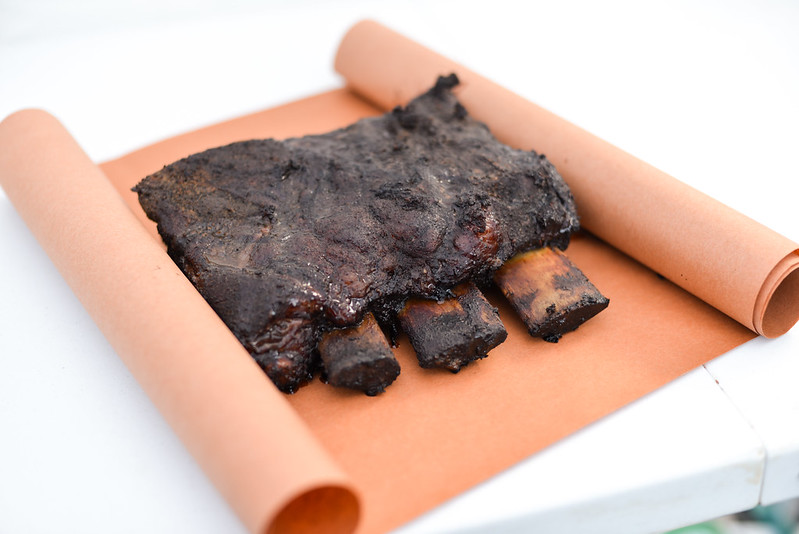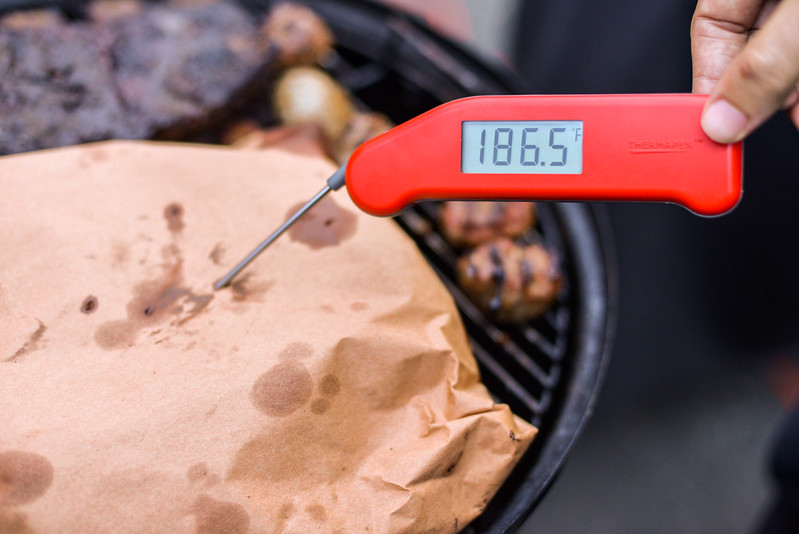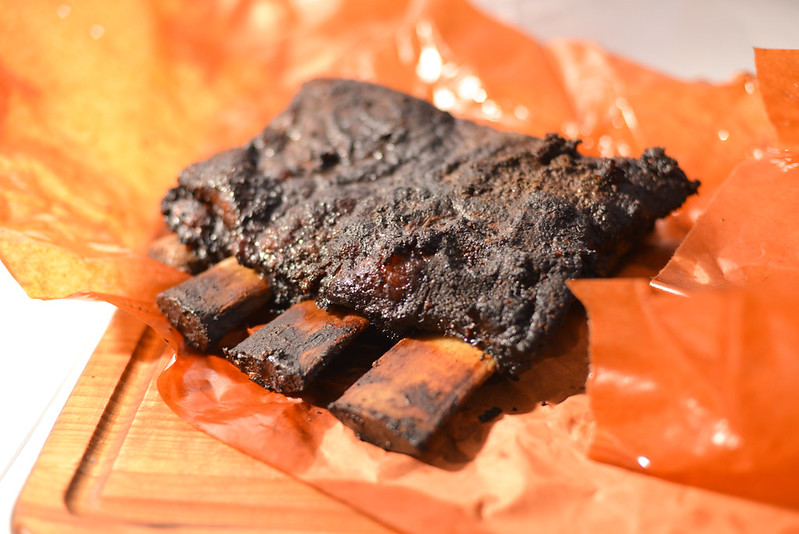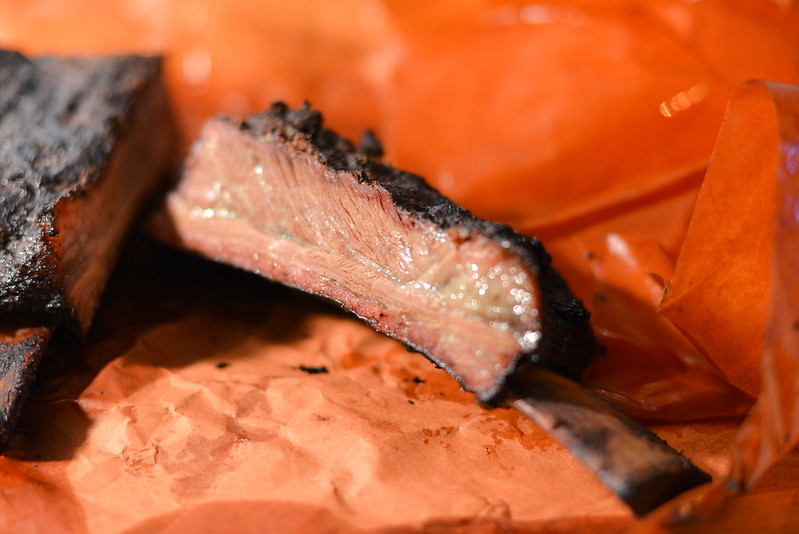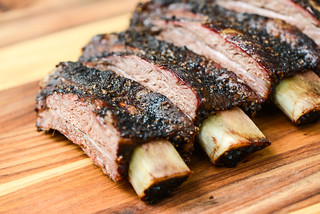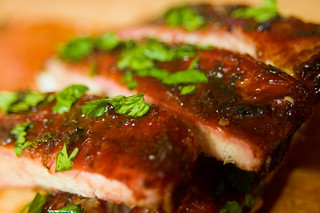Texas-Style Beef Short Ribs
Texas has bred in me a true appreciation for beef barbecue—it is my favorite type, but also the hardest for me to get right. While I love a great brisket, a perfect beef rib is even better with its super beefy flavor, luscious soft fat, and blackened peppery crust. Stick me in Louie Mueller and tell me I can only order one item, and I'm going for that damn beef rib, it's just so good. I've been in a constant state of trying to find a path to transcendent beef ribs like that using my Weber bullet, which looks like a cute little play thing compared to those giant Texas tanks. I can't say these ribs are there yet, but this represents a big step up from past attempts.
Everything might be bigger in Texas, but it sure is smaller in New York. Starting out with that fundamental requirement of giant bones top-loaded with beef wasn't so easy in my home locale of Astoria, Queens.
When I went looking, I can across two common variety of beef ribs—back ribs and short ribs. Back ribs are what you get when a rib roast is divorced from its bones. That rib roast meat fetches top dollar, so it makes sense that most of the meat stays with the roast or steaks, and very little is left on the ribs, but they do have some great stuff between the bones. Back ribs make fine barbecue, but they weren't the giant hunks of meat I was after.
That leaves the short ribs, which are cut from the lower portion of the rib cage and often have a nice layer of fat-laced meat sitting on top. The challenge here was finding ones that would live up to the Texas name. More often than not, the short ribs I came across were cut into small, individual bone portions with wildly varying amounts of meat on them. Fortunately, my local butcher had a few nice racks that had four bones each—around 10-inches squared—with approximately 1 1/4-inches of meat sitting on top. They may not have been quite as large as some ribs I've gotten in Texas, but were close enough to do the job well.
After I had ribs in hand, the prep was pretty minimal. As I do with my pork ribs, I started by peeling the membrane off the backside. This was probably more out of reflex than necessity, but that membrane becomes plasticky and leathery during cooking, and if you're going to gnaw on all sides of the bone, it doesn't make for great eats.
From there, I trimmed down any excessively large areas of hard fat. Fat on the ribs is your friend—and delicious—but big, thick blocks of it will be overly chewy in the end, so I shoot for a layer of fat on top that's about 1/8-inch thick on top.
Finally came the seasoning. When it comes to Texas barbecue, a beef rub doesn't need to go any further than salt and pepper. I did a fifty-fifty mix of kosher salt and coarsely ground black pepper, with a little garlic powder thrown in for my own taste. I liberally covered each of the racks with the rub and they were ready to get smoking.
The concept of cooking barbecue is to take tougher pieces of meat and make them tender and delicious. Cuts like pork shoulder, brisket, and short ribs all have a lot of intramuscular fat and connective tissue that needs to time break down and render, which is why these cuts are all preferably cooked low and slow.
Since short ribs aren't quite as giant of a chunk of meat as brisket—which can take upwards of 12-18 hours to slow cook—the time commitment isn't as demanding. I started my two racks cooking at 225°F, using a mix of charcoal and oak wood chunks, and let them go until I was able to insert an instant read thermometer into the meat with no resistance, which clocked in at six hours. Starting out, I wasn't sure what the right temperature was for tender short ribs, but both racks got there at around the 185° mark.
If you're taking a barbecue trip around Texas, you'll likely encounter butcher paper-wrapped barbecue. While foil-wrapping meat during the cooking process is super prevalent in competition-style barbecue—it's also used by some great Texas pitmasters—swapping foil for butcher paper serves a slightly different purpose.
Foil is not porous, so when you wrap meat in it, moisture is trapped inside and humidity jumps to nearly 100%. This counters typical surface evaporation on the meat, drastically speeding up the cooking process. Butcher paper, on the other hand, allows moisture to escape, so it's not very effective in speeding things up. That said, it does retain some moisture and, most importantly, butcher paper helps with the development of the bark—the dark outside layer that forms on slow-cooked meats.
Since butcher paper "breathes," just enough steam is retained to soften the bark, but not enough to make it lose its thick, slightly crunchy character altogether. Plus, butcher paper becomes saturated in the rendered fat of the meat, and a little extra fat sitting on the surface of the beef only seems to make things better.
Just to test things out, I wrapped one rack of ribs in butcher paper in the last hour of cooking, and left the other unwrapped. With the short cooking process and holding times—I let the ribs rest about one hour in a Cambro before digging in—the butcher paper didn't make a huge difference, but the bark of the wrapped ribs was slightly superior. I assume if cooking and holding times were longer, the moisture retained by the butcher paper would make more of a difference.
Salt, pepper, smoke, and meat are all I started with; what we ate were some ribs that were incredibly moist, tender, peppery, and insanely beefy that I think would make a Texan proud (they passed muster with my Texan wife, but she's from Houston, so take that for what it's worth). Did they match the quality of the best beef ribs I've ever had at Louie Mueller's? No. But they were inching up towards the some of the really excellent bones I've enjoyed at Black's, in Lockhart.
The only way I'm going to improve these is by cooking giant beef short ribs over and over again until I can spot the perfect cut of meet, hit the right temperatures in my smoker, discover the ideal time to wrap, and the best amount of time to hold. None of these can fully be translated into a recipe, since they'll vary from cook to cook. At the end of the day, its the intuition that results from repetition that's this recipe's "secret" ingredient, but I'm sure this post will, at the very least, give you a good start toward making some truly excellent beef ribs.
You Might Also Like
Comments
-
Mike Baylus "At the end of the day, its the intuition that results from repetition that's this recipe's "secret" ingredient.."
You couldn't have stated that any better, and great looking ribs! -
BK All Day another variable to take into consideration is to cut the ribs into individual pieces and smoke them. i got better results when i did this and achieved a super tender and perfectly smoked rib in exactly 4 hours. when i left the beef rack in tact i didn't get the pull back on the bone nearly as much.
-
Chris Time to make some more dino bones, need to get me a whole short rib. I've only ever been to Texas via layovers, but beef has become my favorite BBQ too.
